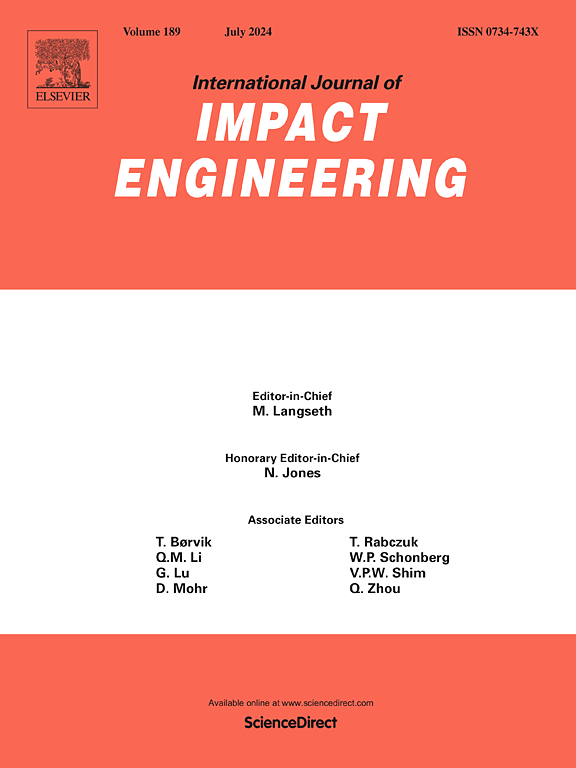Dynamic tensile extrusion of 0.25 and 0.30 caliber hypervelocity particles
IF 5.1
2区 工程技术
Q1 ENGINEERING, MECHANICAL
International Journal of Impact Engineering
Pub Date : 2025-03-27
DOI:10.1016/j.ijimpeng.2025.105331
引用次数: 0
Abstract
An electrothermal gun was used to launch 0.25 and 0.30 caliber hemispherical nose aluminum and copper projectiles at velocities from 1000 to 3000 m/s. The projectiles impacted extrusion dies with half angles varying from 10 to 14.5 degrees for dynamic tensile extrusion experiments in the hypervelocity regime. X-radiography, photon doppler velocimetry, and high-speed video were utilized to characterize the resultant hypervelocity particles. ALEGRA simulations of the extrusion process were performed to assess the performance of some material models used in hydrocode and shock physics simulations. The electrothermal gun combined with ALEGRA simulations proved to be a useful tool in characterizing the dynamic tensile extrusion phenomenon at hypervelocity.
动态拉伸挤压0.25和0.30口径超高速颗粒
电热炮以1000至3000米/秒的速度发射0.25和0.30口径半球形弹头铝和铜弹。采用半角为10 ~ 14.5度的弹丸冲击挤压模进行高速动态拉伸挤压试验。利用x射线照相、光子多普勒测速和高速视频来表征所产生的超高速粒子。对挤压过程进行了ALEGRA模拟,以评估用于流体编码和冲击物理模拟的一些材料模型的性能。电热枪结合ALEGRA模拟是表征超高速动态拉伸挤压现象的有效工具。
本文章由计算机程序翻译,如有差异,请以英文原文为准。
求助全文
约1分钟内获得全文
求助全文
来源期刊

International Journal of Impact Engineering
工程技术-工程:机械
CiteScore
8.70
自引率
13.70%
发文量
241
审稿时长
52 days
期刊介绍:
The International Journal of Impact Engineering, established in 1983 publishes original research findings related to the response of structures, components and materials subjected to impact, blast and high-rate loading. Areas relevant to the journal encompass the following general topics and those associated with them:
-Behaviour and failure of structures and materials under impact and blast loading
-Systems for protection and absorption of impact and blast loading
-Terminal ballistics
-Dynamic behaviour and failure of materials including plasticity and fracture
-Stress waves
-Structural crashworthiness
-High-rate mechanical and forming processes
-Impact, blast and high-rate loading/measurement techniques and their applications
 求助内容:
求助内容: 应助结果提醒方式:
应助结果提醒方式:


